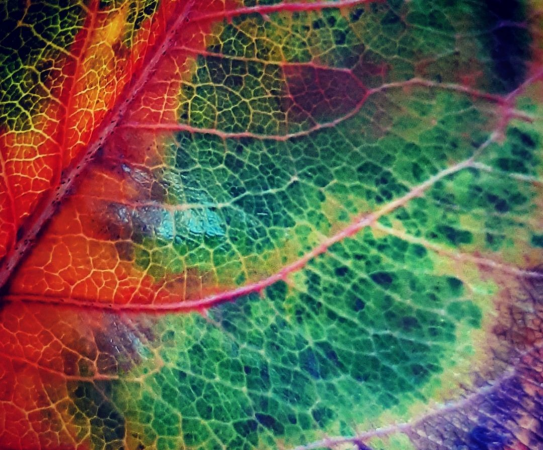Gardening: Now’s the time to prepare for spring
On a recent trip to the local swimming pool I noticed a sign on the wall. It said, “Summer bodies are created in winter”.
Very true, I thought. This sentiment can be applied to gardening. “Spring gardens are created in Autumn”.

Pansies bring colour and cheer in the winter months.
Autumn is a wonderful time of the year. The soil is still warm from the Hawke’s Bay summer, but the temperatures are cooler, and the ground is not so parched. It is a busy time in the garden.
Autumn is a time for tidying, planning, pruning, planting, collecting seed, mulching and preserving. This article will mainly focus on what to plant. Following articles will cover lawn care and pruning.
Summer growth efforts of your fruit and vegetables will have reached fruition, providing you with a bounty of goodies to bottle, pickle and preserve.

Tomatoes have been a roaring success for many.
Don’t despair, if you feel over-whelmed with your supply and are at a loss of what to do with them, check out websites and magazines for preserving ideas and recipes.
If preserving is not your thing, contact your local food bank, or organisations such as Nourished for Nil, who will gladly take your surplus and allocate throughout the community.
Local sharing stands are also an easy way of distributing your surplus.

Distribute your excess throughout the community.
It would seem tomatoes have been a winner this season. Many images of harvests – all shapes, colours and sizes have been joyfully displayed on Facebook and those among us who feel the ‘green finger’ fairy missed them at birth, have delighted in their success.
If you have any tomatoes that still need to ripen simply cut off the top of the plant or remove new flower clusters. This will channel energy into ripening existing fruit, opposed to new growth.

It's preserve and pickle making time.
If you are keen to remove the plants and make way for new autumn plantings, hang the fruit in cool place (not the fridge – this is too cold) and they will gradually ripen.
I have seen many rampant pumpkin vines on my travels. One such plant had reached for the sky and had grown over the top of a lemon tree! This is truly making the most of all available space!
To check if your pumpkins are ripe gently knock the pumpkin with your knuckles. If the sound is hollow, they are ready for picking. If they are not quite there, remove any foliage that is shading them. This will speed up the process. Store your pumpkins in a cool, dark but well-ventilated place.

Store pumpkins in a cool, dark, well-ventilated place.
It is a good time to feed your soil before planting or sowing your winter vegetable crops, flowers, or bulbs. Either incorporate compost directly into the soil or simply lay it on-top of the soil and allow the worms to pull it underneath. If you are giving permaculture a try, leave the roots of last season’s plant in-tact, and apply the ‘chop and drop’ rule.
You may want to plant some perennial vegetables.

Winter crops can now be planted.
Jo Duff from Kahikatea Farm recommends – perpetual beet, broccoli (nine star), kale, bunching onions, cardoons, globe artichokes, burnet and multiplying leeks.
You can also sow peas, beans and carrots. And plant seedlings of spinach, cabbage, cauliflower, broccoli, silver beet, leeks, garlic, onions and spring onions. The white butterfly is still active, so keep a watchful eye on your seedlings for caterpillar damage.
Autumn is bulb planting time. It’s such a joy to see those green tips poke out from the soil. For me, it is sign winter is drawing to an end and we have spring just around the corner.

You can plant seedlings direct or sow seeds.
Your local garden centre will have plenty of bulbs to choose from, but you can’t wrong with mass plantings of daffs and tulips. Even a full pot, placed by your front door will bring immense pleasure.
It is also a good time to plant perennial flowers. If your garden is in need of a re-shape or an injection of something new, perennials are a good option. Perennials are long-lived and add interest to your garden throughout the year. Popular perennials are carnations, gazanias, lavender, daisy’s, salvia, hellebores and alstroemeria.

If you already have perennials in your garden, autumn is a good time to divide clump forming varieties such as daylilies, iris, and hosta. If you have the space you can pop them around the garden, but if you are space limited, you can give them away to your gardening friends. Here in Clive, many gardeners leave plants on the community sharing stand.
If the seeds of thought have been in your mind, playing with the idea of planting a new hedge or tree, planting in autumn will it give it the best chance of survival. Don’t put it off! By the time spring comes around and it pushes forth with vigorous new growth, the roots will be well prepared to support this ‘above ground’ effort.

I made the mistake of impatience and planted a flowering cherry in my garden at the end of last winter. It really struggled to survive over the summer months. Despite watering and feeding, it has looked very sad all season! I am keeping my fingers and toes crossed that it recovers over the following months and leaps into action next spring.
Of-course we can’t forget about the gorgeous winter/spring annuals. My happy place today involves swinging by my favourite garden centre and picking up some delights. Having a new garden and very little time to dedicate to it, means I have many scruffy and unplanted areas. I am going to fill them with pansies, primula, violas, poppies, cornflowers, snapdragons, calendula and polyanthus!
That is my kind of heaven.
Happy autumn!
























